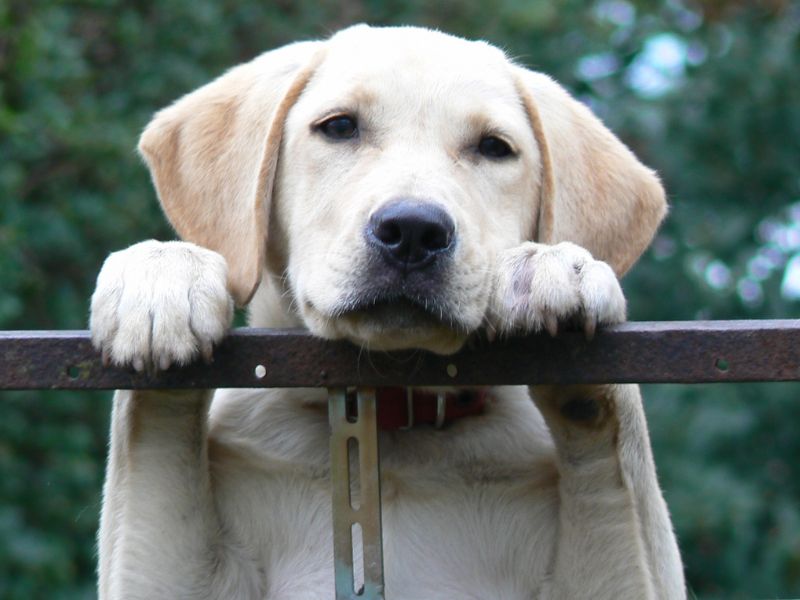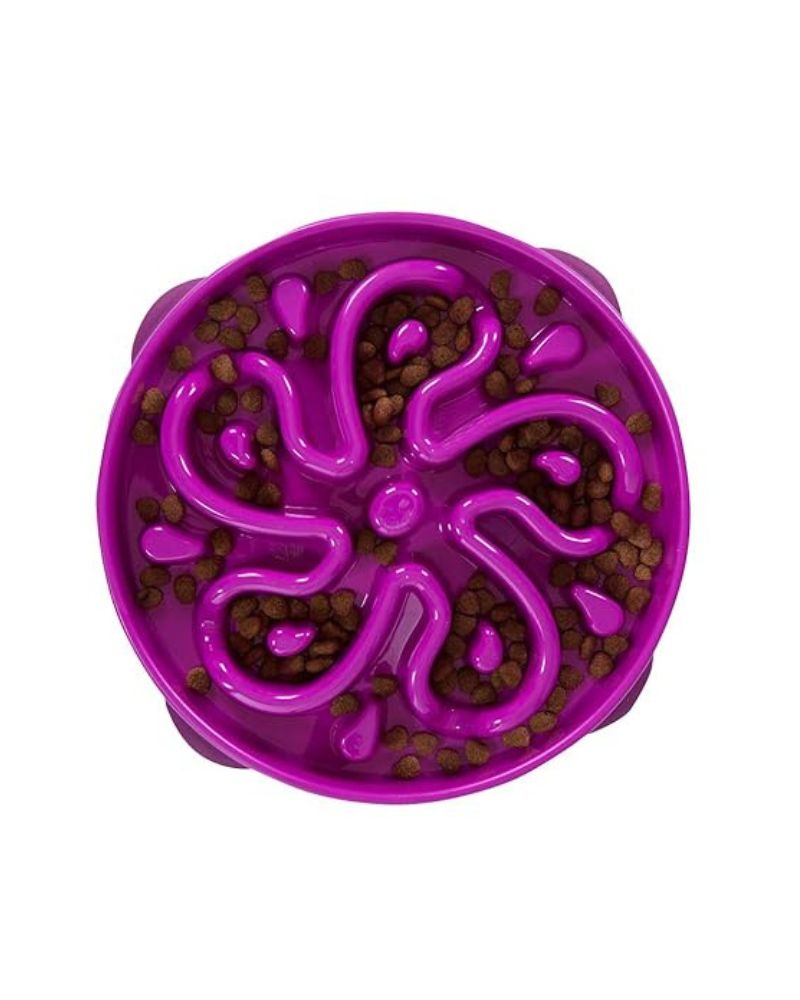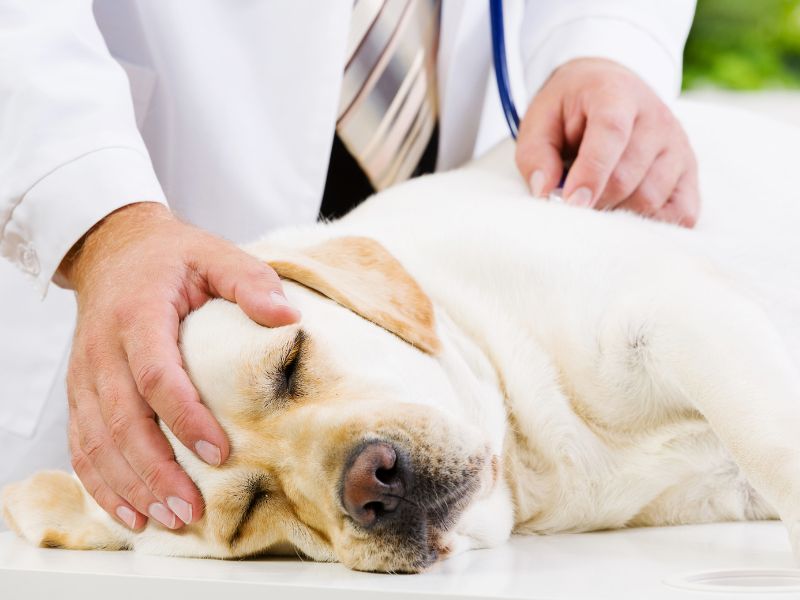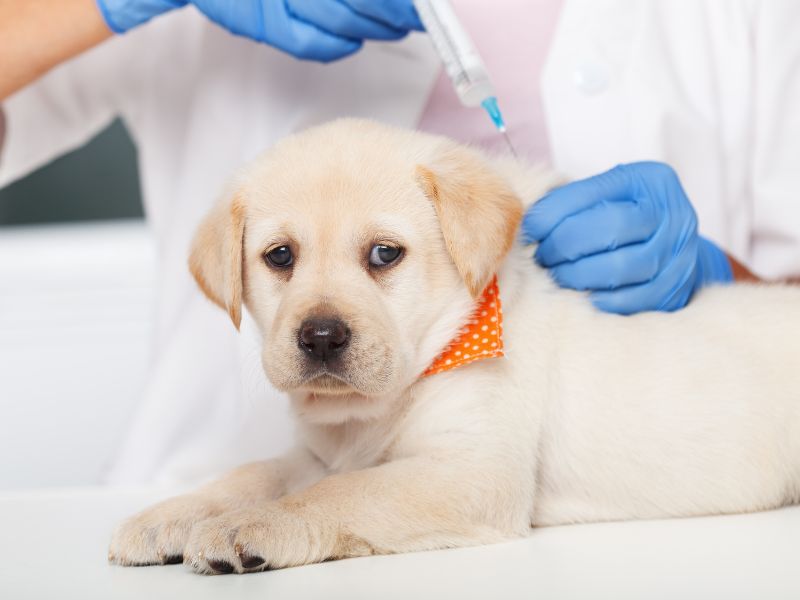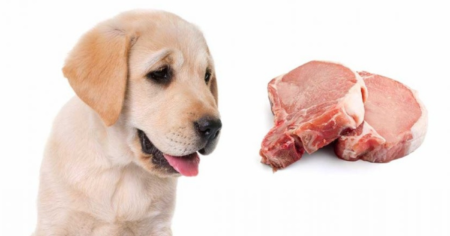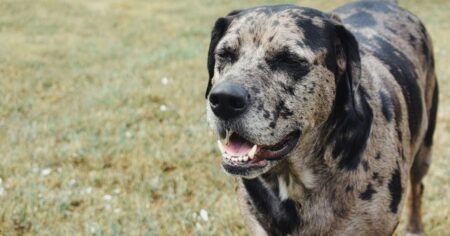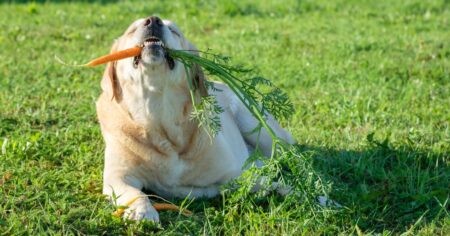Bloat in dogs is a serious and potentially life-threatening condition that affects many dogs each year. Bloat occurs when a dog’s stomach fills with gas, food, or fluid, causing it to expand and put pressure on other organs in the body. This pressure can cause the stomach to twist, which can cut off blood flow to the stomach and other organs, leading to tissue death and shock.
Symptoms of bloat can include a distended abdomen, restlessness, pacing, drooling, and vomiting. If you suspect that your dog may be suffering from bloat, it is important to seek veterinary care immediately. Treatment for bloat typically involves stabilizing the dog’s condition and then surgically correcting the twisted stomach.
While any dog can develop bloat, certain breeds are more prone to the condition than others. Large and giant breeds with deep chests, such as Great Danes, Weimaraners, and Standard Poodles, are at a higher risk of developing bloat. Feeding smaller, more frequent meals, avoiding exercise after meals, and using elevated feeding bowls can help reduce the risk of bloat in susceptible dogs.
What Is Canine Bloat?
Canine bloat, also known as gastric dilatation-volvulus (GDV), is a life-threatening condition that can affect dogs of any breed, but is more commonly seen in large and giant breeds. Bloat occurs when the stomach fills with gas, food, or fluid and expands, putting pressure on the surrounding organs and potentially impacting their effective functioning.
Twisted Stomach
In some cases, the stomach can twist on itself, which is known as volvulus. This can cause a blockage in blood flow to the stomach and other organs, leading to tissue damage and even death if not treated promptly. Symptoms of bloat can include restlessness, abdominal distension, unproductive vomiting, and difficulty breathing. If you suspect your dog is suffering from bloat, it is important to seek emergency veterinary care immediately.
Prevention is key when it comes to bloat, and there are several steps that pet owners can take to reduce their dog’s risk of developing this condition. These steps include feeding smaller, more frequent meals, avoiding exercise and activity immediately after eating, and not allowing dogs to drink excessive amounts of water at once. Additionally, some breeds may be more prone to developing bloat, so it is important to discuss your dog’s individual risk factors with your veterinarian.
What Causes Bloat In Dogs
Bloat in dogs, also known as gastric dilatation-volvulus (GDV), is a life-threatening condition that can occur suddenly and without warning. It is important to understand what causes bloat in dogs to help prevent this condition from occurring.
There are several factors that can contribute to bloat in dogs, including breed, age, and diet. Large and giant breed dogs are more susceptible to bloat, with Great Danes, German Shepherds, and Standard Poodles being at higher risk. Additionally, older dogs are more likely to develop bloat than younger dogs.
Diet can also play a role in the development of bloat in dogs. Feeding a dog one large meal a day, feeding dry kibble, and feeding a high-fat diet have all been associated with an increased risk of bloat. Additionally, dogs who eat too quickly or exercise vigorously after eating are also at higher risk.
It is important for dog owners to be aware of the risk factors for bloat and take steps to prevent this condition from occurring. Feeding smaller meals throughout the day, using a slow feeder bowl, and avoiding exercise for at least an hour after eating can all help reduce the risk of bloat.
How To Prevent Bloat In Dogs
Bloat in dogs can be a life-threatening condition that requires immediate medical attention. While some dogs may be more prone to bloat than others, there are steps you can take to help prevent it from occurring. Here are some tips to help prevent bloat in dogs:
- Feed smaller meals: Instead of feeding one large meal, try feeding two or three smaller meals throughout the day. This can help prevent your dog from eating too quickly, which can contribute to bloat.
- Avoid exercise before and after meals: Exercise can cause the stomach to twist, which can lead to bloat. Avoid exercising your dog for at least an hour before and after meals.
- Slow down eating: Some dogs may eat too quickly, which can contribute to bloat. Try using a slow-feed bowl or placing a large object in the middle of the food bowl to slow down eating.
- Avoid dry kibble: Dry kibble can expand in the stomach and contribute to bloat. Consider feeding your dog a wet or raw food diet.
- Avoid feeding from elevated bowls: While elevated bowls were once thought to prevent bloat, recent studies have shown that they may actually increase the risk. Stick to feeding your dog from a regular bowl on the ground.
By following these tips, you can help reduce the risk of bloat in your dog. If you suspect your dog is experiencing bloat, seek immediate veterinary attention.
Reducing The Risk Of Bloat
Bloat, also known as gastric dilatation-volvulus (GDV), is a life-threatening condition that can affect dogs of any breed or age. While there is no guaranteed way to prevent bloat from occurring, there are several things that pet owners can do to help reduce the risk of their dog developing this condition.
Prevent Fast Eating In Labradors
Labradors are known for their love of food and can be prone to eating too quickly, which can increase the risk of bloat. One way to prevent fast eating is to use a slow feeder bowl, which is designed to force dogs to eat more slowly. Another option is to feed smaller meals more frequently throughout the day, rather than one or two large meals.
Feed On Ground Level
Feeding your dog on the ground level can also help reduce the risk of bloat. Elevated feeding bowls, while popular, have been shown to increase the risk of bloat in some dogs. This is because elevated feeding bowls can cause dogs to swallow more air while eating, which can lead to bloating.
By taking these simple steps, pet owners can help reduce the risk of their dog developing bloat. While there is no guaranteed way to prevent bloat, being aware of the risk factors and taking steps to minimize them can go a long way in keeping your dog healthy and happy.
Get Pippa’s Training Tips!
For those who want to train their dogs to prevent bloat, Pippa’s dog training tips are a great resource. Pippa’s tips cover a wide range of useful topics, from specifics like heel work and recall, to general tips on getting your dog’s attention, avoiding mistakes, motivating yourself and your dog, and setting yourself up to succeed. The tips are completely free, and you can opt out at any time.
Pippa’s tips are designed to help dog owners train their pets in a positive and effective way. She emphasizes the importance of using reward-based training methods that are both fun and effective. Her tips are easy to follow and can help you train your dog to be well-behaved and healthy.
Some of Pippa’s top training tips for preventing bloat include:
- Feeding your dog smaller, more frequent meals instead of one large meal
- Avoiding exercise immediately before and after meals
- Using a slow-feed bowl to prevent your dog from eating too quickly
- Training your dog to relax and settle on command
By following Pippa’s tips, you can help prevent bloat in your dog and ensure that they stay healthy and happy.
The Purdue Study
The Purdue Study is a long-term research project on bloat in dogs conducted by Purdue University. The study began in 1994 and has since enrolled thousands of dogs to investigate the risk factors associated with bloat. The study aims to identify factors that increase the risk of bloat in dogs, to develop preventative measures, and to improve the treatment of bloat.
According to the study, large and giant breed dogs are more susceptible to bloat. The frequency of bloat among all dogs admitted to the different hospitals in the Purdue study ranged from 2.9 to 6.8 per 1,000 dogs. A total of 28.6 percent of the dogs with gastric dilatation and 33.3 percent of those with dilatation and volvulus died in the hospital.
The study has identified several factors that increase the risk of bloat in dogs, including genetics, diet, and feeding practices. The study found that dogs with a deep chest and narrow waist, such as Great Danes and Weimaraners, are at a higher risk of developing bloat. Additionally, dogs that eat one large meal a day or eat rapidly are also at a higher risk of developing bloat.
The Purdue Study has also investigated the effectiveness of preventative measures, such as prophylactic gastropexy, which is a surgical procedure that attaches the stomach to the abdominal wall to prevent twisting. The study found that prophylactic gastropexy significantly reduces the risk of bloat in dogs.
Overall, the Purdue Study has made significant contributions to our understanding of bloat in dogs. The study has identified several risk factors and preventative measures that can help reduce the risk of bloat in dogs.
Signs of Bloat in Dogs
Bloat, also known as Gastric Dilatation-Volvulus (GDV), is a serious condition that can affect dogs of all breeds and sizes. It occurs when a dog’s stomach fills up with gas, fluid, or food, causing it to expand and twist. If left untreated, it can lead to shock, organ damage, and even death. Here are some signs to look out for:
Symptoms of Bloat
- Distended abdomen: One of the most visible signs of bloat is a distended abdomen. The dog’s belly will appear swollen and tight, and may feel hard to the touch.
- Unproductive retching: Dogs with bloat may try to vomit, but nothing comes out. This is known as unproductive retching.
- Excessive drooling: Bloat can cause a dog to drool excessively, which can lead to dehydration.
- Restlessness: A dog with bloat may be restless and unable to get comfortable.
- Pacing: Another sign of bloat is pacing. The dog may walk around in circles or try to lie down and get up repeatedly.
- Rapid heartbeat: Bloat can cause a dog’s heart rate to increase, which can be a sign of shock.
- Pale gums: If a dog’s gums appear pale or white, it can be a sign of decreased blood flow due to bloat.
If you notice any of these signs in your dog, it is important to seek veterinary care immediately. Bloat can progress rapidly and can be life-threatening if left untreated.
Treating Bloat Quickly
Bloat in dogs is a life-threatening condition that requires immediate medical attention. The longer the delay in treatment, the more severe the consequences can be. Therefore, it’s essential to recognize the symptoms of bloat and act quickly.
The first step in treating bloat is to seek veterinary care immediately. The vet will perform a physical exam, blood tests, and X-rays to diagnose the condition accurately. In severe cases, the dog may require emergency surgery to correct the twisted stomach and alleviate pressure on vital organs.
In addition to veterinary care, there are a few things that owners can do to help their dog while waiting for medical attention. Owners should keep their dog calm and quiet to reduce stress and prevent further complications. They can also try to relieve the pressure on the stomach by gently massaging the abdomen. However, it’s essential to be careful not to cause any further damage or discomfort.
Owners must also avoid giving their dog any food or water, as this can worsen the condition. Instead, they should follow the vet’s instructions and administer any prescribed medication or fluids as directed. By acting quickly and seeking veterinary care, owners can increase their dog’s chances of a successful recovery.
How To Diagnose Bloat In Dogs
Bloat in dogs is a serious condition that requires prompt medical attention. It is important to know the signs of bloat so that you can take your dog to the vet immediately if you suspect they are suffering from this condition. Here are some ways to diagnose bloat in dogs:
Observe your dog’s behavior
One of the first signs of bloat in dogs is restlessness and pacing. If your dog is pacing around, unable to settle down, and seems uncomfortable, it could be a sign that they are suffering from bloat. Other signs to look out for include excessive drooling, panting, and whining.
Check for physical symptoms
Physical symptoms of bloat in dogs include a distended abdomen, which may feel hard to the touch. You can check for this by gently pressing on your dog’s stomach. If they seem to be in pain or discomfort when you touch their stomach, it could be a sign of bloat. Other symptoms to look out for include pale gums, rapid heartbeat, and shallow breathing.
Seek veterinary attention
If you suspect your dog is suffering from bloat, it is important to seek veterinary attention immediately. Bloat is a life-threatening condition that can cause your dog’s stomach to twist, cutting off blood flow to vital organs. Without prompt treatment, bloat can be fatal. Your vet will be able to diagnose bloat through a physical exam, X-rays, and blood tests.
By observing your dog’s behavior and physical symptoms, and seeking veterinary attention immediately if you suspect they are suffering from bloat, you can help ensure that your dog receives prompt treatment and has the best chance of making a full recovery.
Dog Bloat Treatment
If you suspect your dog has bloat, it’s important to seek veterinary care immediately. Bloat can quickly become life-threatening, and prompt treatment can significantly increase your dog’s chances of survival.
The first step in treating bloat is to stabilize your dog’s condition. This may involve administering IV fluids, oxygen therapy, and medication to relieve pain and reduce inflammation. In severe cases, surgery may be necessary to correct the twisted stomach and prevent further complications.
Once your dog’s condition has stabilized, your veterinarian will likely recommend ongoing treatment to address any underlying health issues that may have contributed to the bloat. This may include changes to your dog’s diet, exercise routine, and medication regimen.
In addition to medical treatment, there are several steps you can take at home to help prevent bloat from recurring. These may include feeding your dog smaller, more frequent meals, avoiding exercise immediately before and after meals, and monitoring your dog’s water intake to prevent excessive drinking. Regular check-ups with your veterinarian can also help detect and address any potential health issues before they become serious.
References & Resources
If you want to learn more about bloat in dogs, there are many resources available online. Here are some of the most helpful and informative sources on the topic:
- American Kennel Club (AKC) – The AKC is a great resource for dog owners and breeders. Their website includes a comprehensive guide to bloat in dogs, including symptoms, causes, and treatment options. They also provide a list of breeds that are most at risk for bloat, as well as tips for preventing the condition.
- Veterinarians.org – This website offers a detailed explanation of how bloat happens and what to do about it. They also provide information on the different types of bloat, such as gastric dilatation and volvulus (GDV), and how they can be treated.
- Best Friends Animal Society – Best Friends is a national animal welfare organization that provides resources and support to pet owners and animal rescues. Their website includes an informative article on bloat in dogs, which covers the symptoms, causes, and treatment of the condition. They also offer tips for preventing bloat in your dog.
- Preventive Vet – This website is dedicated to helping pet owners keep their animals healthy and happy. They offer a detailed guide to the causes of bloat in dogs, including information on feeding habits, exercise, and genetics. They also provide tips for reducing your dog’s risk of developing bloat.
Overall, it’s important to be aware of the signs and symptoms of bloat in dogs, and to seek veterinary care immediately if you suspect your dog may be suffering from the condition. With the right treatment and prevention strategies, you can help keep your furry friend healthy and happy for years to come.



